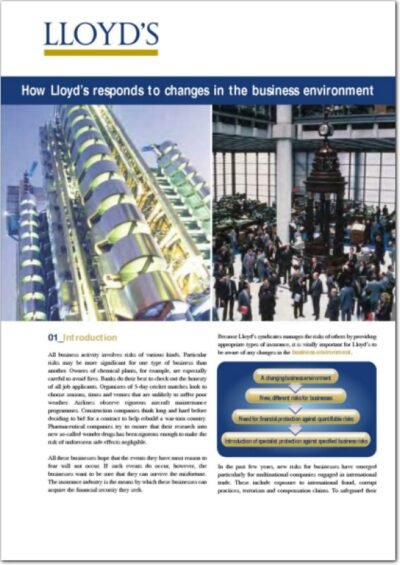The asset turnover ratio is a critical financial metric that measures the efficiency of a company in utilising its assets to generate revenue. It provides insight into how well a business is converting its investments in assets into sales. Essentially, this ratio indicates the amount of revenue generated for each unit of asset owned by the company.
A higher asset turnover ratio suggests that a company is using its assets more efficiently, while a lower ratio may indicate underutilisation or inefficiencies in asset management. This ratio is particularly significant for businesses with substantial investments in fixed assets, such as manufacturing firms or retail chains. For instance, a retail company that operates numerous stores must effectively manage its inventory and physical locations to maximise sales.
Conversely, a service-oriented business may have fewer tangible assets, making the asset turnover ratio less relevant. Understanding this metric allows stakeholders, including investors and management, to assess operational performance and make informed decisions regarding asset management strategies.
Summary
- Asset turnover ratio measures a company’s efficiency in using its assets to generate sales revenue
- Asset turnover ratio is calculated by dividing net sales by average total assets
- A high asset turnover ratio indicates that a company is using its assets efficiently, while a low ratio may indicate inefficiency
- Interpreting asset turnover ratio involves comparing it to industry averages and historical data for the company
- Factors affecting asset turnover ratio include industry trends, business strategy, and economic conditions
Calculating Asset Turnover Ratio
Understanding the Formula Components
Net sales refer to the total revenue from goods sold or services rendered, minus any returns or allowances. Average total assets are typically calculated by taking the sum of the beginning and ending total assets for a specific period and dividing by two.
Interpreting the Results
This calculation provides a more accurate representation of asset utilisation over time, rather than relying solely on a snapshot at the end of the period. For example, if a company reports net sales of £500,000 and has average total assets of £250,000, the asset turnover ratio would be 2.0. This indicates that for every pound invested in assets, the company generates £2 in sales.
Contextualising the Results
It is essential to note that while this ratio can provide valuable insights, it should be considered alongside other financial metrics to gain a comprehensive understanding of a company’s performance.
Importance of Asset Turnover Ratio
The asset turnover ratio serves as an essential tool for evaluating operational efficiency and financial health. Investors and analysts often scrutinise this metric to gauge how effectively a company is leveraging its assets to drive sales. A high asset turnover ratio can signal strong management practices and operational efficiency, which are attractive qualities for potential investors.
It reflects a company’s ability to generate revenue without requiring excessive investment in assets, thereby enhancing profitability. Moreover, the asset turnover ratio can also serve as a benchmark for comparing companies within the same industry. Different sectors have varying capital requirements; thus, what constitutes a “good” asset turnover ratio can differ significantly from one industry to another.
For instance, technology companies may exhibit higher ratios due to lower capital intensity compared to heavy manufacturing firms. By understanding these nuances, stakeholders can make more informed comparisons and investment decisions.
Interpreting Asset Turnover Ratio
Interpreting the asset turnover ratio requires an understanding of both the absolute value of the ratio and its context within the industry. A high asset turnover ratio may indicate that a company is efficiently using its assets to generate sales; however, it could also suggest that the company is operating with minimal assets, which may not be sustainable in the long term. Conversely, a low asset turnover ratio might raise concerns about inefficiencies or over-investment in assets but could also reflect a strategic choice to maintain higher inventory levels or invest in long-term growth.
For example, consider two retail companies: one with an asset turnover ratio of 3.0 and another with 1.5. While the first company appears to be more efficient at generating sales from its assets, it may also be operating with a leaner inventory strategy that could risk stockouts during peak demand periods. The second company, while less efficient in terms of asset utilisation, might be strategically investing in additional inventory to capture market share or respond to customer demand fluctuations.
Thus, it is crucial to analyse the underlying business model and market conditions when interpreting these ratios.
Factors Affecting Asset Turnover Ratio
Several factors can influence a company’s asset turnover ratio, including industry characteristics, business model, and economic conditions. Industry norms play a significant role; for instance, capital-intensive industries such as utilities or manufacturing typically have lower asset turnover ratios due to their substantial investments in fixed assets. In contrast, service-oriented businesses or retail companies often exhibit higher ratios because they require fewer physical assets to generate sales.
Additionally, a company’s business model can significantly impact its asset turnover ratio. Companies that focus on high-volume sales with lower margins may achieve higher ratios by rapidly turning over inventory and utilising their assets efficiently. On the other hand, businesses that rely on high-margin products may have lower turnover ratios but still maintain healthy profit margins.
Economic conditions also play a role; during periods of economic growth, companies may experience increased sales and improved asset utilisation, while downturns can lead to reduced sales and lower ratios.
Comparing Asset Turnover Ratio
Comparing asset turnover ratios across companies within the same industry can provide valuable insights into relative performance and operational efficiency. However, it is essential to consider various factors when making these comparisons. For instance, companies with different business models or strategies may have inherently different asset turnover ratios due to their operational focus.
A direct comparison between a high-volume retailer and a luxury goods manufacturer may not yield meaningful insights without considering their respective market positions and customer bases. Moreover, trends over time can be more informative than static comparisons at a single point in time. An increasing asset turnover ratio over several periods may indicate improving efficiency or successful strategic initiatives, while a declining ratio could signal potential issues that require attention.
Analysts often look for patterns in these ratios alongside other financial metrics to develop a comprehensive view of a company’s performance trajectory.
Improving Asset Turnover Ratio
Improving the asset turnover ratio often involves strategic initiatives aimed at enhancing operational efficiency and optimising asset utilisation. Companies can adopt various approaches to achieve this goal, such as streamlining operations, reducing excess inventory, or investing in technology that enhances productivity. For instance, implementing just-in-time inventory systems can help minimise excess stock while ensuring that products are available when needed, thereby improving turnover rates.
Another effective strategy is to evaluate and potentially divest underperforming assets that do not contribute significantly to revenue generation. By focusing on core competencies and reallocating resources towards more profitable ventures, companies can enhance their overall asset efficiency. Additionally, investing in employee training and development can lead to improved productivity and better utilisation of existing assets, further contributing to an improved asset turnover ratio.
Using Asset Turnover Ratio for Financial Analysis
The asset turnover ratio is an invaluable tool for financial analysis that provides insights into how effectively a company utilises its assets to generate revenue. By understanding its calculation and significance, stakeholders can assess operational efficiency and make informed decisions regarding investments and management strategies. However, it is crucial to interpret this metric within the context of industry norms and specific business models to gain meaningful insights.
As companies strive for continuous improvement in their operations, focusing on enhancing the asset turnover ratio can lead to better financial performance and increased shareholder value. By adopting strategic initiatives aimed at optimising asset utilisation and streamlining operations, businesses can position themselves for long-term success in an increasingly competitive landscape. Ultimately, the asset turnover ratio serves as both a diagnostic tool and a guide for strategic decision-making in financial management.
If you are interested in learning more about how to effectively market your business, you may want to check out the article on marketing planning. This article provides valuable insights into creating a successful marketing strategy that can help improve your asset turnover ratio. By understanding how to effectively promote your products or services, you can attract more customers and increase your revenue. Additionally, you may also find the article on Tableau certification helpful in analysing and interpreting data to make informed business decisions.
FAQs
What is the Asset Turnover Ratio?
The asset turnover ratio is a financial metric used to measure a company’s efficiency in using its assets to generate revenue. It indicates how well a company is utilizing its assets to generate sales.
How is the Asset Turnover Ratio Calculated?
The asset turnover ratio is calculated by dividing a company’s net sales by its average total assets. The formula is: Asset Turnover Ratio = Net Sales / Average Total Assets.
What Does a High Asset Turnover Ratio Indicate?
A high asset turnover ratio indicates that a company is effectively using its assets to generate sales. It suggests that the company is efficient in managing its assets and turning them into revenue.
What Does a Low Asset Turnover Ratio Indicate?
A low asset turnover ratio may indicate that a company is not effectively using its assets to generate sales. It could suggest that the company is inefficient in managing its assets and turning them into revenue.
How is the Asset Turnover Ratio Used in Financial Analysis?
The asset turnover ratio is used by investors and analysts to assess a company’s operational efficiency and performance. It helps in comparing the efficiency of different companies within the same industry and identifying potential areas for improvement.
 Feeding and fuelling the world through technology (MP3)
Feeding and fuelling the world through technology (MP3)  How Lloyd's responds to changes in the business environment (PDF)
How Lloyd's responds to changes in the business environment (PDF)  Creating value - brand management (PDF)
Creating value - brand management (PDF)  CMI A3 ePoster Edition 17 "Managing change"
CMI A3 ePoster Edition 17 "Managing change" 

